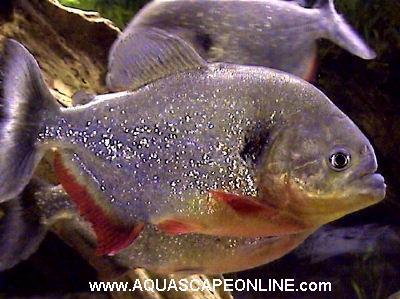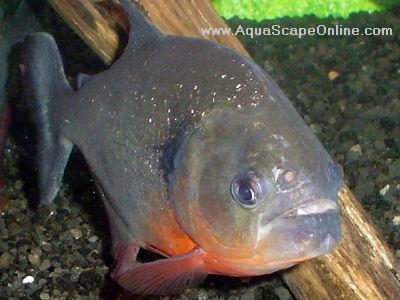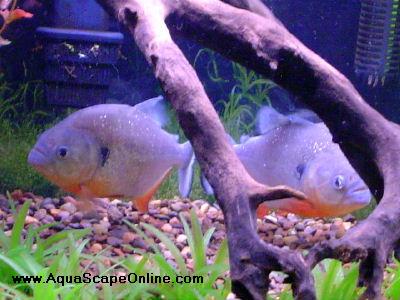Caribe Piranha 3"-4" (pygocentrus notatus)
(FwF Piranha Pygo Caribe 5)
Fish Size:

Scientific Name:
PYGOCENTRUS CARIBA.
Common Names:
Cariba Piranha, Black Shoulder Piranha, Orinoco Piranha, Black Eared Piranha, Venuzuelan Red Belly Piranha. The natives indians call this species Caribe, which means cannibal. They are named after an infamous, warlike native tribe which no longer exists. This species is also called Capaburro by local cattle herdsmen, which means Donkey Castrator...

Range:
Only found in the Rio Orinoco lowland basin and the Llanos region in Venezuela.
Maximum Size:
approx. 35cm. (14"); specimen larger than 12" are very rare in the home aquarium.
Body Characteristics:
Juveniles as well as adults have the upper part of their body (from the typical black humeral spot to the base of the tail fin) silvery grey. Juveniles have black spots all over their upper body, similar to juvenile P. nattereri. The lower body part is red or red-orange, and varies from fish to fish. Most of the head is grey, with some orange or red on the lower side. The eye is silvery, with black pigments above and below iris, like a dark vertical band. The anal and pectoral fins are orange to red. The dorsal fin is dark grayish-black, the adipose fin black. The tail fin resembles that of the Redbelly: dark, with a light vertical band in the middle.

Distinctive/unique features:
- Clear eyes.
- Humeral spot.
Tank:
Juvenile and sub-adult specimens of this species should be kept in a tank of at least 20 gallons (80 liters). Adults need at least 15, preferably more gallons per fish (depending on tank size: large tanks, 100+ gallons, can in theory hold more fish than smaller ones, due to the larger footprint). Because P. cariba is regarded by many as being more active and more agressive and territorial than its close relative P. nattereri, more gallons per fish is recommended, especially for larger fish (10-12"+).
Compatible Species:
Pygocentrus nattereri, Pygocentrus piraya, Pygocentrus ternetzi, Super reds.

Food:
This species accepts the same foods as most other piranha's: fish (fresh fillets, frozen fish, live feeders), shrimp, krill and other crustaceans, worms and other insects, small mammals.
Comments:
The Cariba has been said to be a very aggressive species in the wild. Groups of these fish have been known to congregate under nesting birds waiting for chicks to fall into the water.
-
By: Jonas Hansel (Thank you, for the great information)
Product Reviews :
Average rating : 
Number of reviews : 3
Write a review
Miscellaneous :
Email a Friend
Product Inquiry
|
|
Related Products :
|